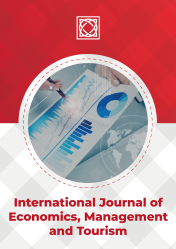SOCIO-DEMOGRAPHIC CHARACTERISTICS AS A FACTOR FOR CUSTOMERS’ SATISFACTION
DOI:
https://doi.org/10.46763/IJEMT244107pKeywords:
restaurants, demographic characteristics, satisfactionAbstract
This research was conducted with the purpose to determine the impact of socio-demographic characteristics on the satisfaction of service users in restaurants. Online questionnaire was conducted through the Google forms including the entire restaurant management, and the satisfaction of the service users was measured through the questions asked. The 152 questionnaires were fully analysed. The analysed socio-demographic characteristics included: gender, age, monthly income, employment status, and education. The data was analysed with the variance analysis (AHOVA) and t-test. Statistically significant differences were noted in age, education, and work status (p<0.05). In order for restaurants to be competitive in the market, their management needs to focus on the problems and find a way to solve them in order to improve the satisfaction of the visitors.

